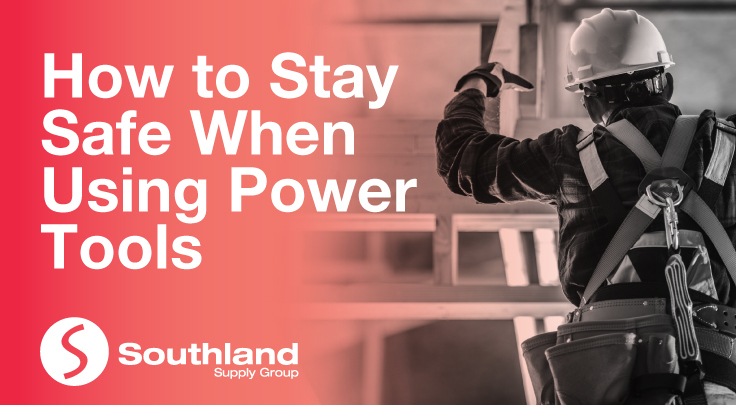
Power tools such as grinders, power saws, sanders, drills, etc. make a lot of jobs easier and quicker and require less physical effort. However, along with all the benefits power tools offer, they also come with increased risk. Power tools are dangerous, and when accidents happen, they can be serious.
Power tools present hazards such as noise, vibration, electrical shock, moving parts and projectiles. They can cause severe and even fatal injury if used incorrectly. Here's a list of things to consider when using power tools:
1. Use Personal Protective Equipment
Wearing the right PPE such as safety goggles and safety gloves to protect against hazards that may be encountered while using hand tools.
2. Regularly Inspect Your Tools
All power tools require regular checks, as continuous use causes wear and tear. Even if your tools are brand new, don’t take any chances. Periodic inspections are the key to staying safe.
3. Turn the Tools Off After Use
Leaving your power tools plugged in and in “stand by” mode should be avoided at all times. It can create serious problems for people who are not aware that the tool is powered. In order to prevent injuries and accidents, always turn them off after each use.
4. Use Proper Lighting
One of the common workplace situations that can cause injuries is the lack of proper lighting. People often overlook the importance of having a properly lit working environment. When used in poorly lit conditions, power tools can be deadly. On the other hand, good lighting in the workplace reduces the risk of occupational accidents.
If your workplace lighting is not bright enough, it is a good idea to bring in additional work lights.
5. Keep your workplace clean
A cluttered workplace, especially the floor, can lead to accidental trips or falls which can be extremely dangerous when working with hand and power tools.
Power Tools Safety Rules
As mentioned above, power tools can be hazardous and dangerous when improperly used. This is true of all power tools, regardless of their power source (electric, pneumatic, liquid fuel, hydraulic, powder actuated etc).
Employees should be trained in the use of power tools, and they should be able to understand the potential hazards as well as the safety precautions to prevent accidents from occurring.
The following general precautions should be observed by power tool users:
- Never carry a tool by the cord or hose.
- Never sharply pull, or ‘yank’ the cord or the hose to disconnect it from the power point.
- Keep cords and hoses away from heat, oil, and sharp edges.
- Disconnect tools when not using them, before servicing and cleaning them, and when changing accessories such as blades, bits, and cutters.
- Keep all people not involved with the work at a safe distance from the work area.
- Secure work with clamps or a vise, freeing both hands to operate the tool.
- Avoid accidental starting. Do not hold fingers on the switch button while carrying a plugged-in tool.
- Maintain tools with care; keep them sharp and clean for best performance.
- Follow instructions in the user's manual for lubricating and changing accessories.
- Be sure to maintain a good footing and balance when operating power tools.
- Wear the correct safety workwear for the task. Loose clothing, ties, or jewelry can become caught in moving parts.
- Remove all damaged portable electric tools from use and clearly mark with a "Do Not Use" tag.
Both employees and employers have a responsibility to work together to establish safe working procedures. If a hazardous situation is encountered, it should be brought to the attention of the proper individual immediately. For a complete range of safety gear at work, visit Southland at https://www.southland.com.au/ or get in touch at 1800 77 22 91.
